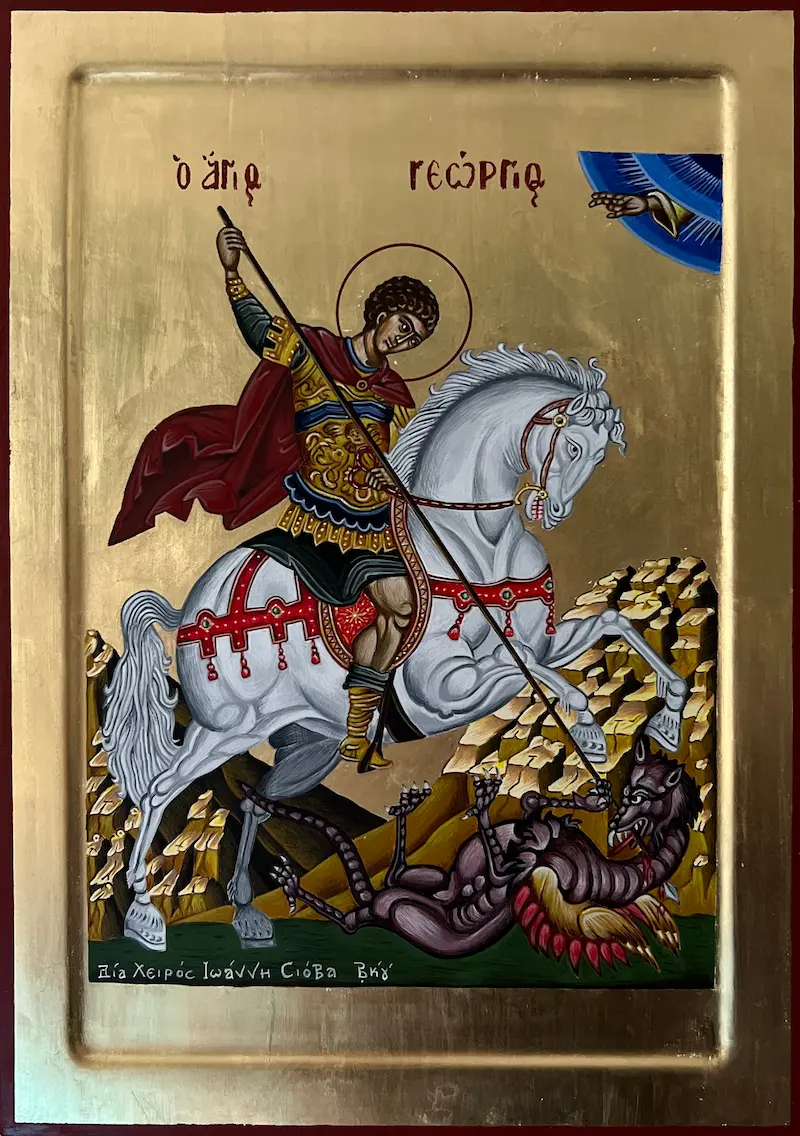His name, one of the most popular among the Greek population, one of the most well-known and beloved Saints in the entire Christian – and not only – world. Born into a wealthy and aristocratic family from Cappadocia in Asia Minor, he was an officer in the Roman army. His action, martyrdom and burial are set in the 3rd century and early 4th century AD, during the reign of Diocletian.
His memory is commemorated twice a year: on April 23rd his death by beheading or, for the Churches following the Julian calendar, if the day coincides before the Resurrection, it is moved to Epiphany Monday and on November 3rd the recollection of his remains.
Saint George, as a Trophy Bearer (military man), Saint and liberator, gathers many accounts of his exploits, with the most important of all being the slaying of the dragon and the rescue of the king’s daughter.
According to tradition, a beast guarded the water of a spring, in Libya, and would not let the inhabitants drink water unless they gave him a fellow villager at a time. The local people determined by lot the victim of the dragon for many years. Entire armies opposed the monster, to no avail. The lot also fell to the princess, who was saved by Saint George, a young officer on horseback, slaying the dragon with his pole.
Saint George is still the patron saint of both troops and countries. Because his life is military, he is considered the patron saint of the Infantry and the Greek Land Army, while he is also the patron saint of England. Also, he was considered the patron saint of the Crusaders, who brought his relic from Palestine to the West, as well as the Boy Scouts.
Saint George is, moreover, the Saint of the Catholic, Anglican, Orthodox, Lutheran and Armenian Churches, as well as the patron Saint of the Christians of Palestine, Beirut, Georgia and the Bulgarian army.
The name George is Greek, it comes from the noun “Georgion” which means cultivable and during the period of his feast (April 23) the farmers sow, hence the name of the “sower”.
But the Saint is also the protector of the cattle breeders, because his feast day coincides with the time when they leave the winter fields and climb the mountains.
His feast marks the beginning of Spring and is combined with customs of joy and euphoria.

